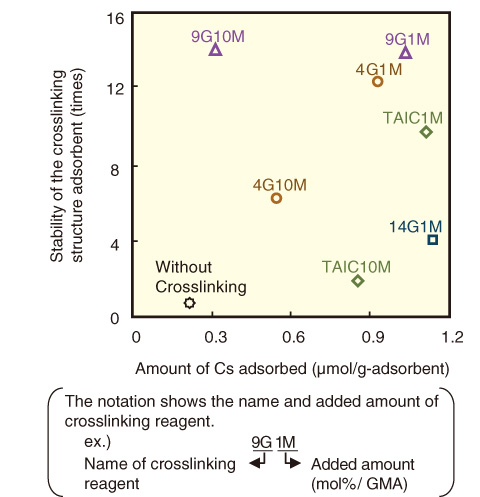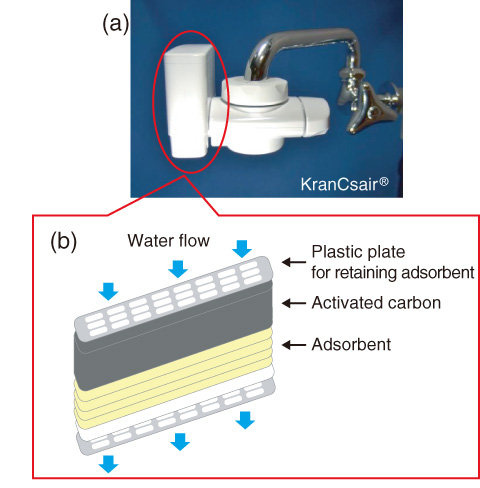
Fig.1-18 Efficiency of crosslinking structure for adsorbent stability

Fig.1-19 (a) Water purifier for Cs removal and (b) internal structure of cartridge
More than two years have elapsed since the accident at the TEPCO’s Fukushima Daiichi NPS, and the radioactive cesium (Cs) concentration in environmental water has been reduced. However, the results of a 2012 monitoring investigation of the drinking water in Fukushima reported by the Ministry of the Environment showed that radioactive Cs was detected in 6 of 436 samples. Therefore, securing ‘water’ is demand.
We developed a grafted adsorbent for removing soluble Cs immediately after this accident. The developed adsorbent consisted of ammonium 12-molybdophosphate (AMP) as the adsorbent functional group supported on a nonwoven polyethylene fabric acting as the substrate by radiation-induced graft polymerization. In a previous result, this adsorbent exhibited instability: The supported AMP released easily from the adsorbent. In this study, the unstable adsorbent was improved by introducing a crosslinking structure to realize very little AMP elution. Introducing a crosslinking structure to the grafted glycidyl methacrylate (GMA) chain of the adsorbent was attempted by adding three types of polyethylene glycol dimethacrylate (4G, 9G, or 14G) or triallyl isocyanurate (TAIC) as the crosslinking reagent to a monomer.
The efficiency of the improved adsorbent was investigated by batch-wise adsorption tests. The adsorbent was cut into pieces 1 cm2 (0.02 g) in size and immersed in 50 mℓ of 50 μg/ℓ Cs solution under stirring for 24 h.
It was clarified that the amount of AMP eluted (calculated as the eluted Mo) from the adsorbents with the introduced crosslinking structure was less than that without the structure (Fig.1-18). Further, the amount of Cs adsorbed on most adsorbents with the crosslinking structure was greater than that adsorbed without the structure.
An evaluation by an external organization verified that this improved adsorbent satisfies the Food Sanitation Act and Water Supply Act, and we developed a cartridge-type water purifier called KranCsair® (Fig.1-19(a)). This original cartridge, which incorporates the developed adsorbent, is replaced easily (Fig.1-19(b)). A monitoring test of the developed purifier was conducted in Fukushima. On the basis of the result, we will determine the final product specifications.